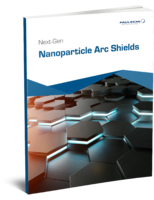Barcode Reader Reinforces Motorist Convenience Over Toll Bridge

Motorists have disliked toll roads and toll bridges since their inception
in the United States in the 1700s, not only for the rising cost of tolls
used to fund maintenance and operational costs, but also because of
toll-plaza gridlock. According to a Texas Traffic Institute report of May
2005, Americans stalled in traffic waiting to pay a toll wasted some 2.3
billion gallons of motor fuel. At almost $3 for regular gas that is a lot
of money going up in fumes.
Thankfully, electronic toll collection systems (ETC) have stepped up to the
plate easing toll plaza congestion from pre-registered accounts. Most
recognizable are radio frequency identification (RFID) systems, where an
antenna at the toll plaza zeros in on a transponder, or tag inside a
vehicle and deducts a toll, resulting in non-stop vehicle passage.
Another toll collection system expanding from gated communities to the
highway, is the latest generation of barcode readers. Often overlooked,
this cutting-edge tool is already popular at exclusive communities,
resorts, hospitals, universities and commercial parking lots. The readers
use laser technology to decipher encrypted code. The inexpensive decals
attach to the side windows of registered vehicles. Motorists drive through,
hands-free, without stopping. Barcode Readers are convenient and efficient.
The barcode decals eliminate the need for costly tags, and unlike RFIDs,
are immune to RF interference.
Barcode Readers installed at the Atlantic Beach Bridge, operated by the
Nassau County Bridge Authority in New York, have successfully handled
annual non-cash commuter transactions at its toll plaza since 2001. The
1,173-foot long, six-lane structure over the Reynolds Channel connects the
Nassau Expressway with the Atlantic Beach communities. Many residents and
businesses depend on the bridge to link them to jobs and vendors. Although
high-volume traffic happens during rush hour, the peak travel season occurs
during summer as New Yorkers escape the urban heat and flock to the cooler
beach shores.
The original drawbridge was built in 1927 by a group of private investors
wanting to freight merchandise across the channel. According to bridge
records, it was constructed of wood and measured 1,000-feet with three
lanes and a 13-foot vertical clearance. This low clearance required lifting
the bridge often, to permit tall sailing vessels.
At first, the private consortium charged the general public a 25-cent toll.
In time, battered by extreme cold weather, snow and increased traffic, the
structure eroded. By 1950, the state and Nassau County ordered today's
modern $2.5 million, concrete, six-lane structure. The old wooden bridge
was taken down, leaving only abutments as reminder of its location. Best of
all, a 153-foot draw span accommodates the larger maritime vessels,
requiring less lifting.
Most recently, in order to comply with federal safety standards following
9/11 terrorist attacks, another major $19 million rehabilitation project
took place. Carmelo Ayala, of the Nassau County Bridge Authority Atlantic
Beach Bridge, says this work included the reconstruction of entry roadways,
replacement of the outdated concrete bridge deck, rails, and structural
steel supports. Pedestrian and cyclist walkways were widened.
Ayala says that during the structure's history, toll collection has also
undergone various changes. Initially, commuters paid toll operators at the
bridge. Later automatic toll collectors were installed. By 2000 a dozen
BA-200 Barcode Readers began phasing in, bringing electronic coin
collection (ETC) to the old bridge. Manufactured by Barcode Automation,
inc. (BAI), in Winter Springs, Florida, the ETC system has promoted easy
drive-through, helping to lower operating costs and bringing increased
traffic flow.
"Frankly, the primary selling feature for us with the BA-200 was it's
capability of interfacing with our existing computer application," said
Ayala. "Plus, we liked the decal cost. We have a high commuter turnaround,
plus we also offer seasonal passes. So, in the long run the decals are less
expensive to replace than the RFID tags and transponders."
Ayala said that in no time, regular commuters and local businesses were
applying for the annual decal program. He estimates some 9,000 decals have
been distributed to date. Traffic congestion and waiting decreased
noticeably and he observed that even if the lines became long, decal users
still moved through quicker.
"I think our barcode readers are tough workhorses," Ayala said. "Traffic
out here is horrendous, especially in summer when it flows in peaks and
valleys. We can't afford to have a unit down. But, those units don't quit,
even when they take a beating from the weather. We've had minimal repair
since installation. The turnaround time from BAI technical support is
always great. I think our readers are good testament as to how well their
system works."
The BA-200's reputation as a high-quality, sturdy and flexible product with
easy installation has made it the choice of dealers for thousands of gated
entry points across the nation. ETL listed to UL294 Standard, the system is
also offered as a standalone, which allows direct one-gate control. All
components are encased in a NEMA 4 Standard aluminum housing. Communication
can be done via the RS232 serial port, or Wiegand output. An internal
transaction log retains the last 2,000 vehicle identification numbers, time
and date to be used for regulatory reports. It comes from the factory
already configured, but can be changed to meet a specific site's need.
Also, BAI offers cost-effective decals in 56 color combinations for
color-coded parking lots.
BAI is the leading manufacturer of barcode systems, offering products
through a network of dealers and integrators nationwide. To learn more
about the BA-200 Barcode Reader, visit www.barcode-automation.com or call
(800-528-9167).
Contact:
Carmen Manly, Public Relations Manager
Barcode Automation, inc.
PO Box 195268
Winter Springs, FL 32719-5268
Telephone: 800-528-9167
carmen@barcode-automation.com




